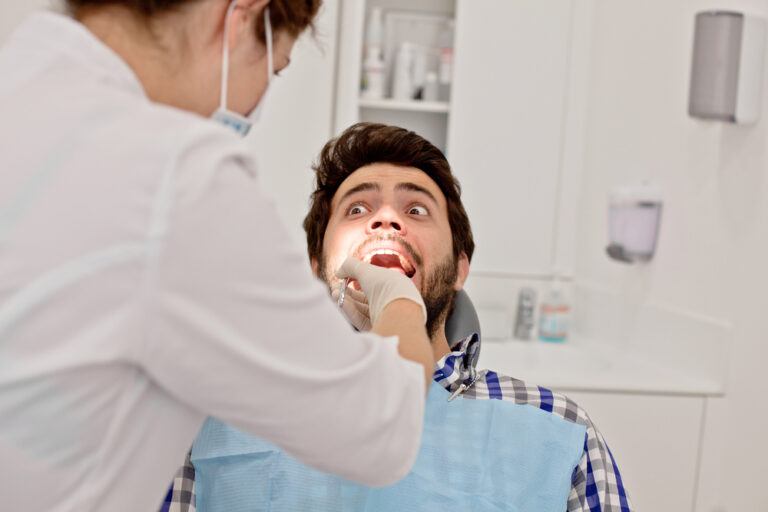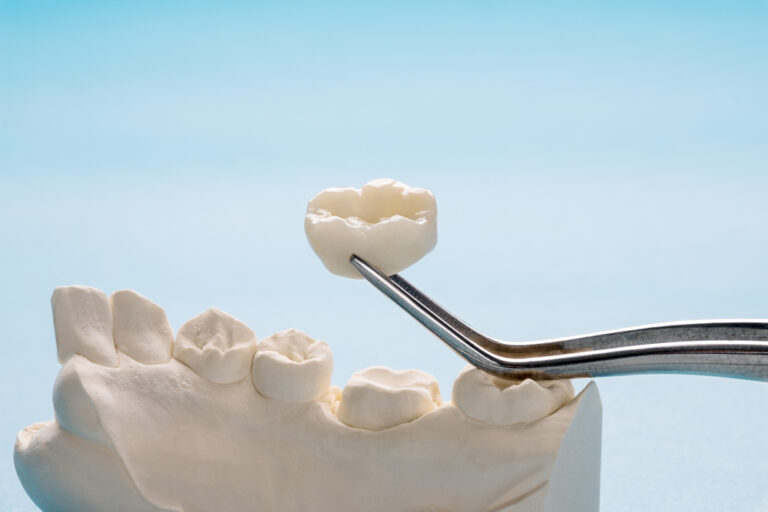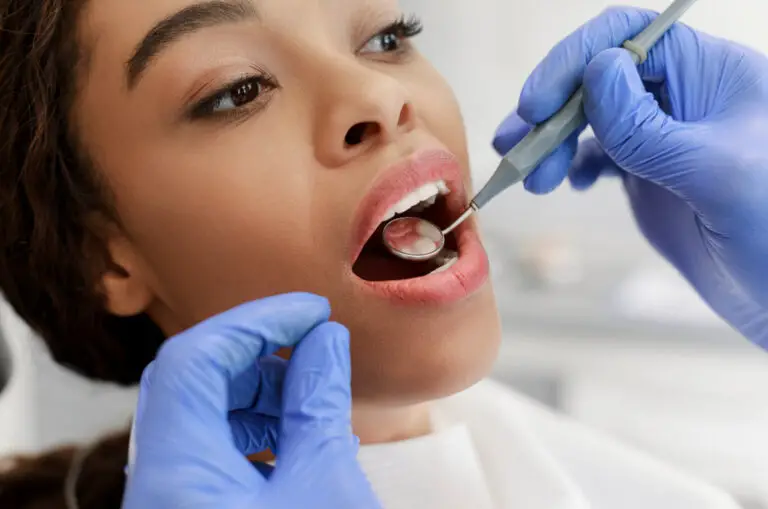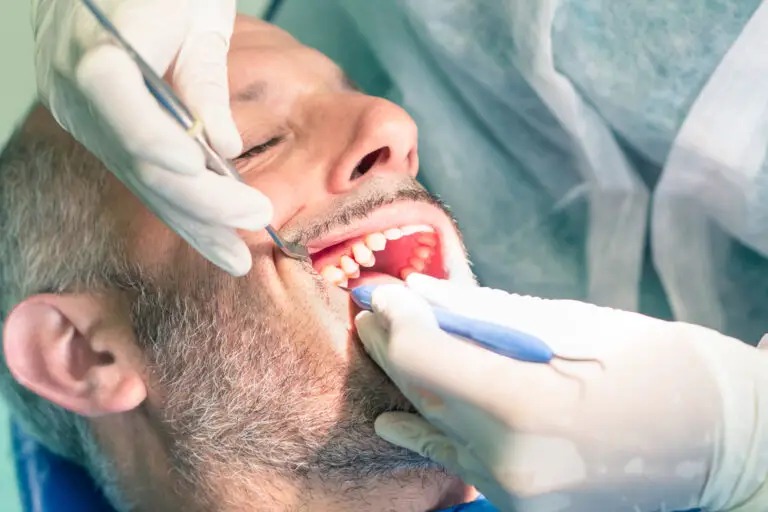How tooth extraction can affect your bite
Tooth extraction, also known as exodontia, is the removal of a tooth from its socket in the bone. It is one of the most common dental procedures, with millions of teeth extracted each year in the United States.
While often a straightforward procedure, tooth extraction can occasionally lead to changes or problems with your bite (how your teeth come together). This occurs because extracting a tooth leaves an empty space in the dental arch. The nearby teeth may tilt or shift into that space over time, altering the alignment or contact between the upper and lower teeth.
Ways a tooth extraction can alter your bite:
- Tooth rotation – The teeth adjacent to the extraction site can gradually rotate or twist over time as they drift into the empty space. This can make the teeth no longer properly align with their counterparts in the opposite jaw. For example, the second molar may rotate mesially (forward) to try to fill the space left by extracting the first molar. This can make its chewing surface no longer match up with the opposing tooth.
- Teeth tilting – The empty socket allows the nearby teeth to tilt or shift toward the extraction area. Their angulation and orientation can become improper. For instance, the canine may tilt toward the extraction site of the lateral incisor, making it more vertical. This can prevent it from providing proper guidance during bite closure.
- Supereruption – If a lower tooth is extracted, the opposing upper tooth may slowly over-erupt due to the lack of contact. For example, if a lower first molar is removed, the upper first molar may extrude excessively down toward the extraction site over time. This can alter the vertical dimension of the bite.
- Mesial drift – The teeth behind the extraction site may drift mesially (forward) to try to close the gap. This can cause a chain reaction of shifting teeth. For instance, if a first molar is pulled, the second and third molars may drift forward, causing the posterior teeth to lose alignment.
- Occlusion changes – Since the contact between the opposing teeth is altered, this can affect the way the upper and lower teeth fit together (the bite occlusion). It may change the way the teeth meet and mesh. For example, extraction of an incisor can allow the canine to drift into its place, preventing proper anterior guidance during excursive movements.
How long after an extraction can your bite change?
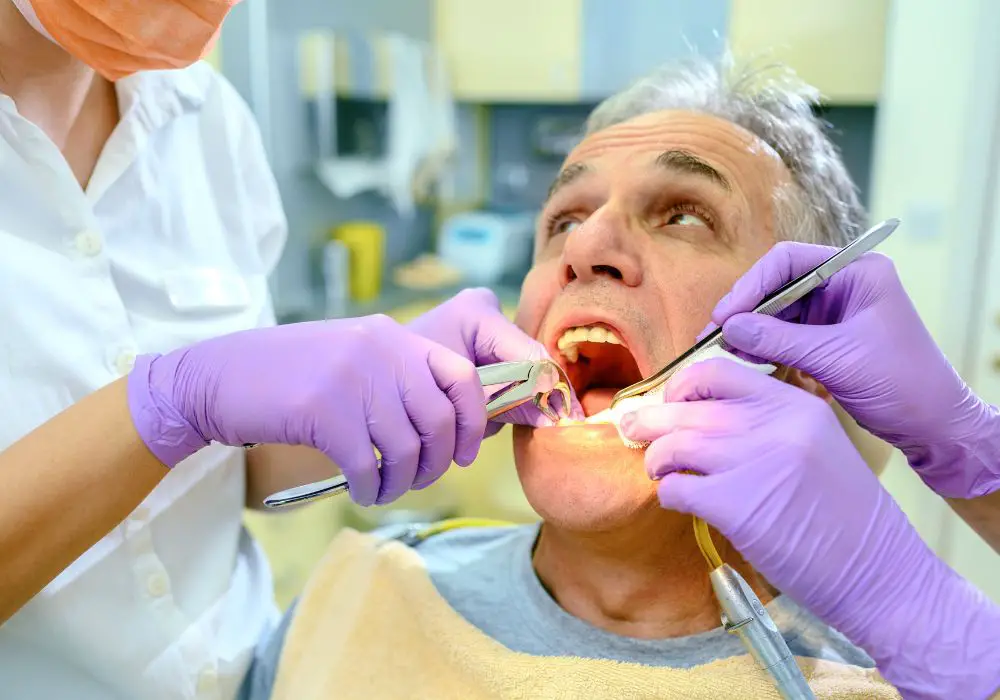
Changes to your bite do not happen immediately after a tooth extraction, but rather occur gradually over time. Here is the general timeline:
- First 3 months – The initial socket healing and bone remodeling takes place during this period. The most dramatic occlusion changes usually happen within the first 8-12 weeks as the bone responds to the missing tooth.
- 3-6 months – Further drifting and shifting of nearby teeth continue as the bone socket fills in with new tissue. Modest bite changes may occur during this time frame as the teeth adjust to the open space.
- 6-12 months – Additional minor changes are still possible as the bone and gums completely stabilize. More subtle occlusal changes may develop even up to a year later.
- 1+ years – In some cases, the dental arch might continue adapting long-term to the missing tooth. Slow, gradual shifting of certain teeth adjacent to the extraction site can lead to minor bite changes years later.
This timeline can vary between patients and the specific case. But in general, the bite is still somewhat malleable during the first year after an extraction before stabilizing. Maintaining regular dental visits helps monitor for any problematic occlusion changes.
What teeth are most likely to shift when extracted?
Certain teeth are more prone to cause bite problems when extracted, due to their positioning and function:
- First molars – These are very important “anchor teeth” near the back of the mouth. They have multiple contact points and help stabilize the bite. Losing them often leads to tilting or rotation of the other posterior teeth as they drift to fill the space.
- Incisors – The upper and lower incisors mesh together to guide the bite and play a big role in proper alignment. Extraction of these teeth frequently allows the corresponding opposite incisor to supraerupt or drift.
- Canines – These “cornerstone teeth” guide the upper and lower teeth into the proper bite closure pattern. Extracting them can allow for a significant shift of the nearby incisors and premolars.
- Premolars – While less severe than other teeth, premolar extraction can still lead to some crown tilting and malocclusion of the molars, affecting the bite.
- Multiple teeth – If you require extraction of more than one tooth, this magnifies the effect. Removing many teeth in the same area allows greater drifting and tipping throughout the dental arch.
How can tooth extraction negatively change your bite?
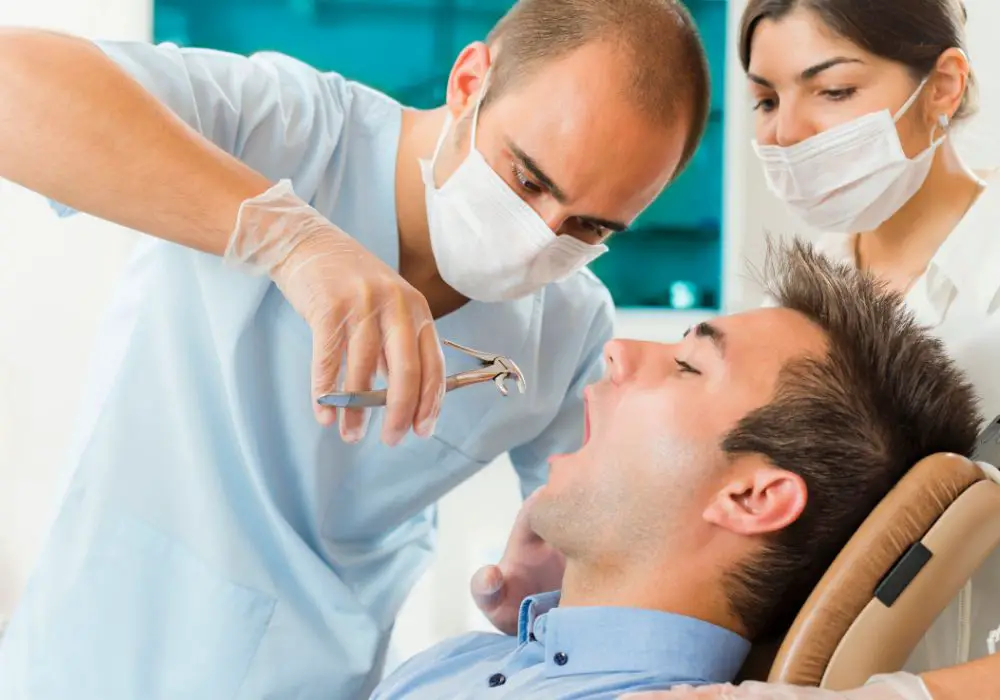
There are a few potential problems that can stem from bite changes following a tooth extraction:
- Misalignment – Teeth shifting into the newly open space can result in crooked, overlapped or gapped teeth that don’t meet properly. This negatively impacts chewing function.
- Occlusal interference – The way the upper and lower teeth come together may develop interference that causes strain on the teeth and muscles during jaw movements.
- Tooth fracture – Abnormal bite forces placed on teeth shifting into new positions can lead to cracked teeth, split cusps, or outright tooth fracture.
- Temporomandibular joint dysfunction – Changes in occlusion can alter the condyle-disc-fossa relationship and result in popping, clicking, locking or pain in the TMJ.
- Aesthetic changes – Rotated, tilted or supraerupted teeth may lead to a compromised smile appearance and poor dental esthetics.
- Periodontal problems – Bite instability and malocclusion can increase the risk of certain periodontal issues like bone loss or gingival recession over time.
- Tooth wear – The chewing surfaces may wear in an abnormal, accelerated pattern due to atypical tooth contacts after an extraction.
- Bone loss – Improper forces from a changed bite can contribute to alveolar bone loss around the teeth. This further deteriorates the foundation of the teeth.
- Impaired function – Problems chewing, speaking or swallowing can result from a significantly altered occlusion and loss of molar support.
Factors that influence bite changes after extractions
Some characteristics and circumstances that play a role in determining how much (if at all) your bite will change after a tooth extraction include:
- Which tooth is removed – molars, canines and incisors are most problematic
- If a tooth is already missing on the opposing arch
- Your age and jaw development status – younger patients have more potential for shifting
- The health of your periodontal tissues – strong, intact fibers reduce movement
- Your habits like fingernail biting or chewing on one side
- If you wear a bite splint or nightguard
- The presence of parafunctional habits like clenching/grinding
- Your prior dental work like braces or crowns
- If you eventually replace the missing tooth with a prosthetic
- The number of teeth extracted – single vs multiple extractions
Younger patients who are still developing and have healthy periodontal tissues tend to experience more dramatic occlusion changes following extractions. Older patients with mature dental arches may only have subtle bite shifts.
Can a dentist prevent bite changes after extractions?
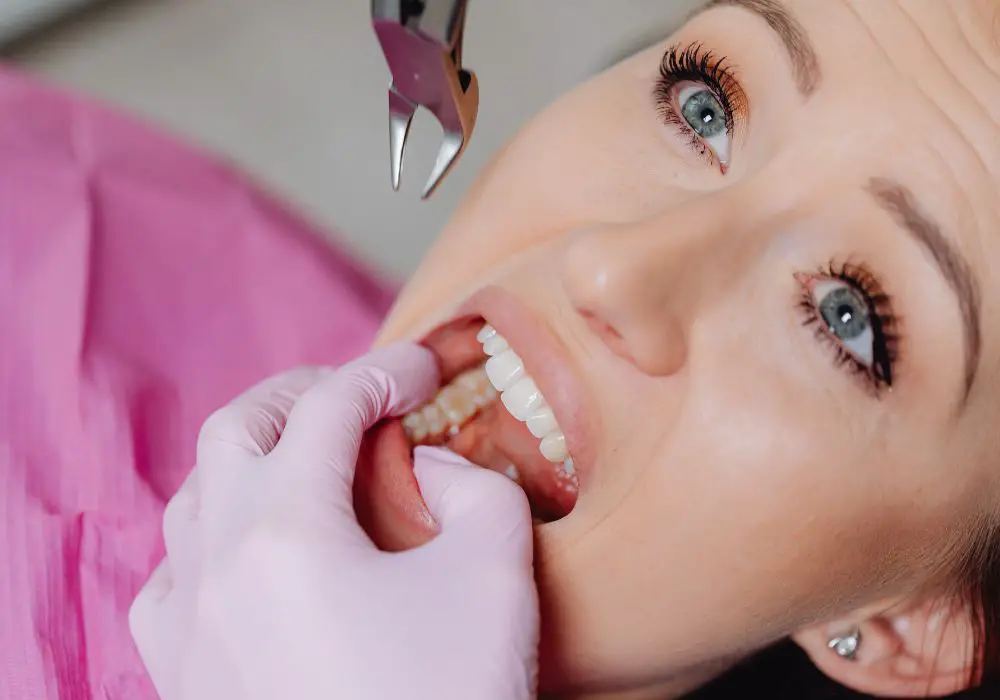
Dentists have several options to help minimize the risk and extent of bite alterations after removing a tooth:
- Tooth replacement – Placing a dental implant, bridge or partial denture can hold the surrounding teeth in position and prevent them from shifting. This maintains the space and occlusal relationship.
- Orthodontic retention – Using a fixed retainer on the adjacent teeth can limit movement. Clear aligner therapy can also guide the teeth into proper alignment after extraction.
- Bite splint – Having the patient wear a stabilizing bite guard or occlusal splint can reduce changes. This is especially helpful at night.
- Extraction technique – Surgically removing the tooth while protecting the alveolar bone can help prevent resorption and changes. Avoiding trauma helps maintain bone.
- Regular dental visits – Monitoring for bite changes and quickly catching any problems early on can help limit their progression. Ongoing observation is key.
- Prompt treatment – Early intervention for bite problems developing after an extraction can often prevent extensive complications down the road.
- Anterior drift – Allowing slow, minor anterior tooth drifting to close a small posterior gap is sometimes the best option. This minimizes major changes.
With proper planning and care by both the dentist and patient, extraction doesn’t necessarily mean the bite will be permanently altered. But keeping an eye on any changes through recall visits is very prudent.
Correcting bite problems after tooth extraction
If a tooth extraction does eventually result in bite problems, several treatment options exist:
Orthodontic treatment
Braces or clear aligners can bring the teeth back into proper alignment and correct altered occlusion. Orthodontics may involve:
- Uprighting severely tilted teeth
- Rotating significantly rotated teeth
- Closing spaces from excessive drifting
- Coordinating tight occlusion using elastics
- Providing appropriate vertical dimension
This comprehensive approach helps reestablish functional alignment and contacts between the upper and lower arches after extraction-induced changes.
Dental restorations
Carefully shaped composite fillings, inlays, onlays or dental crowns can restore the original tooth structure and help guide the bite back to health. They can fill spaces and provide stability.
Occlusal adjustment
Selectively smoothing and reshaping the biting surfaces of affected teeth can help normalize the bite relationship. This evens out the contacts between teeth.
Nightguards and bite splints
These can be worn to protect the teeth from abnormal bite forces. They provide a temporary protective solution while pursuing other treatments to permanently correct the occlusion.
Tooth replacement
Placing a missing tooth replacement like a dental implant, bridge or partial denture can open the extraction space back up. This allows the neighboring teeth to return to their original position.
Frequently Asked Questions
How long after a tooth extraction will my bite change?
Most significant bite changes occur within the first 3-6 months after the tooth is removed as the bone heals and teeth shift. More subtle shifts can continue up to a year later. Remaining vigilant with dental visits can catch issues early.
Do teeth move right after an extraction?
There is not usually immediate dramatic tooth movement after removing a tooth. The changes tend to occur slowly over several months as the bone remodeling takes place and the nearby teeth drift. But subtle shifts begin fairly quickly.
Can one missing tooth affect your bite?
Yes, just a single missing tooth can potentially alter your bite alignment over time after extraction. The adjacent and opposing teeth often tilt, rotate or drift to fill the vacant space, disrupting occlusion. Timely replacement can prevent this.
Is it bad if teeth shift after an extraction?
Some minor tooth movement is normal. But excessive changes in the positioning of teeth after an extraction can lead to problems like fractures, bone loss, TMJ dysfunction, malocclusion, and poor esthetics. Consulting your dentist promptly is advised.
How do dentists correct bite problems from extractions?
Orthodontics, dental restorations like crowns, occlusal adjustment procedures, bite guards, and replacing missing teeth are common ways dentists can restore proper bite function after it has been disrupted by tooth extractions. Addressing issues early makes correction easier.
Summary
Tooth extraction is very commonly performed in dentistry. Removing a tooth creates an empty socket in the dental arch which the remaining teeth may drift into over time. This can negatively alter the way your upper and lower teeth fit together – your bite occlusion.
The tooth position and timing play a major role in the impact on your bite. Problems like misaligned teeth, TMJ dysfunction, and abnormal wear can stem from extraction-caused changes. Treatments like orthodontics, prosthodontics and occlusal adjustment can correct resulting bite issues.
With careful treatment planning and monitoring, a tooth extraction does not inevitably mean your bite will be impaired. But being vigilant and communicating with your dentist can help minimize adverse effects on your oral function. Taking steps to replace missing teeth is also wise to prevent gradual bite changes from emerging.



